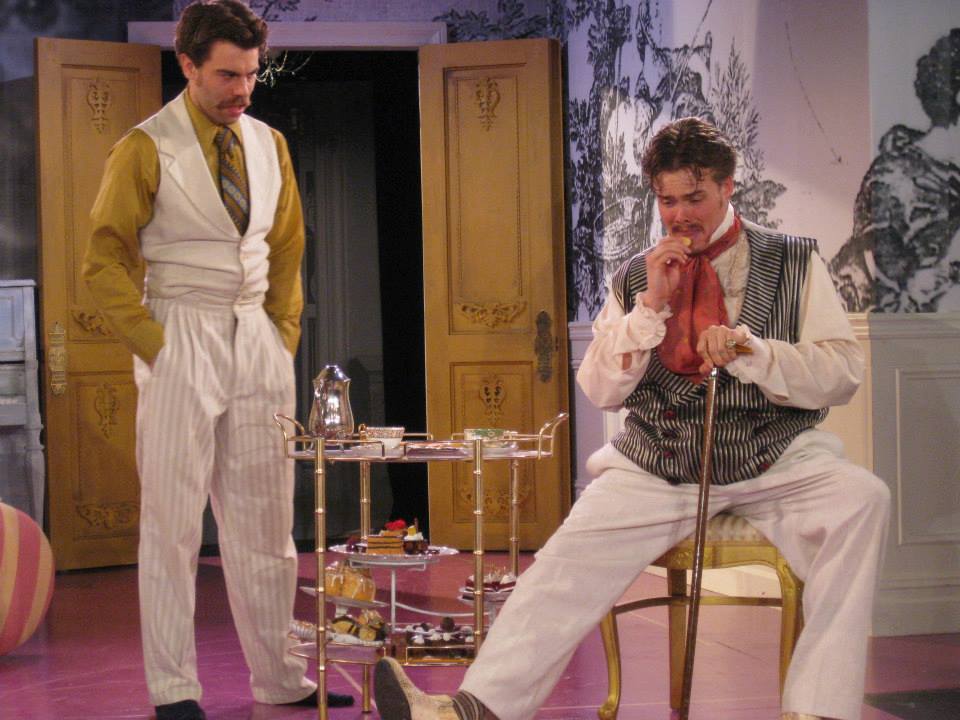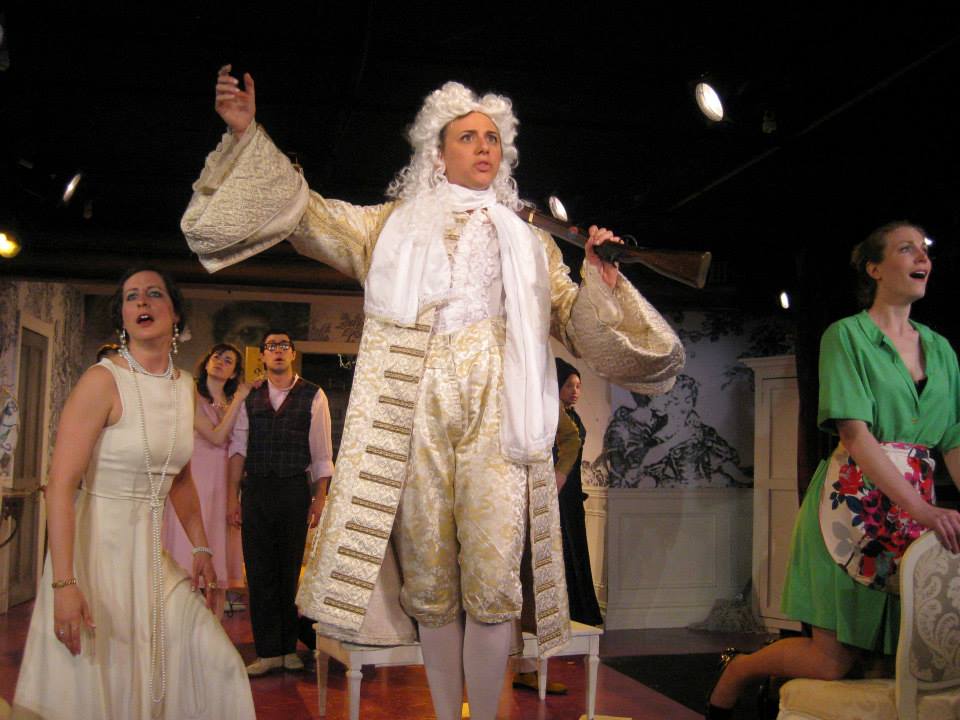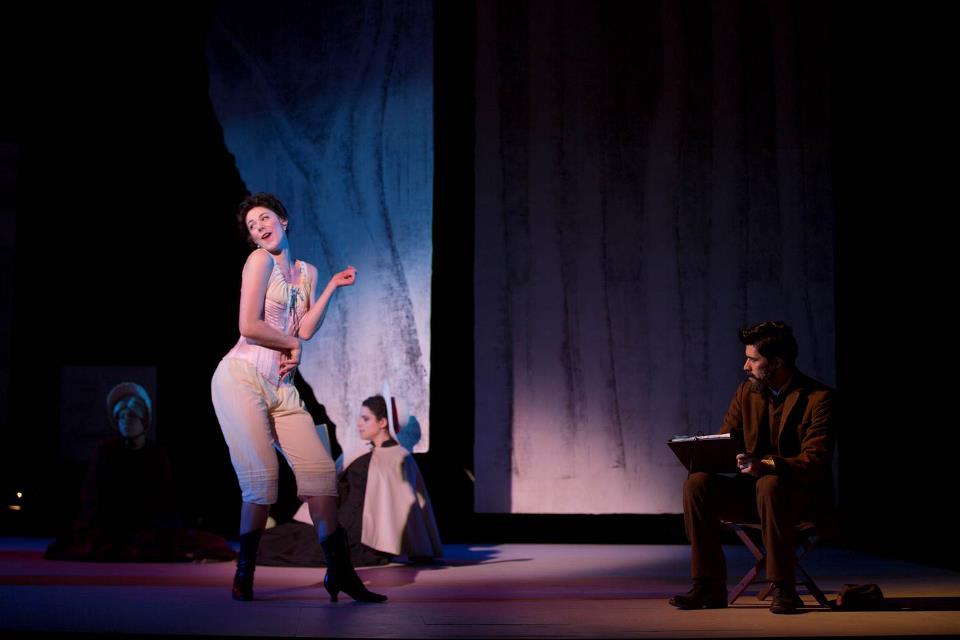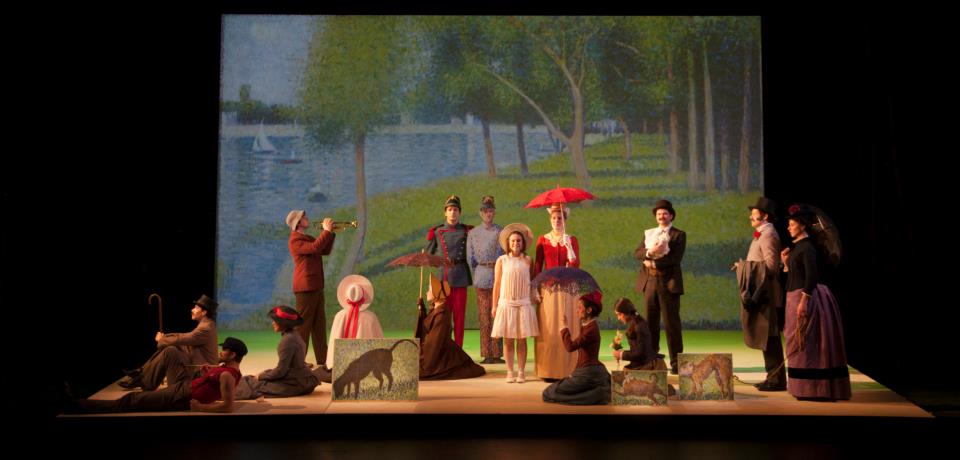OMG what an energetic show! The Mystery Boy, currently playing at the Yale Cabaret, is director/actor Chris Bannow’s adaptation of a novel by Jacqueline Weaver, his 11 year-old sister, a show short on logic but long on wildly imaginative interactions and adventures. Staged very cunningly by Bannow and Helen Jakcsch, the show is like a master class in how to put on a play where all characters are onstage all the time and all necessary prop wrangling and costume changes take place before our eyes—though you’ll have to be attentive to catch it all.
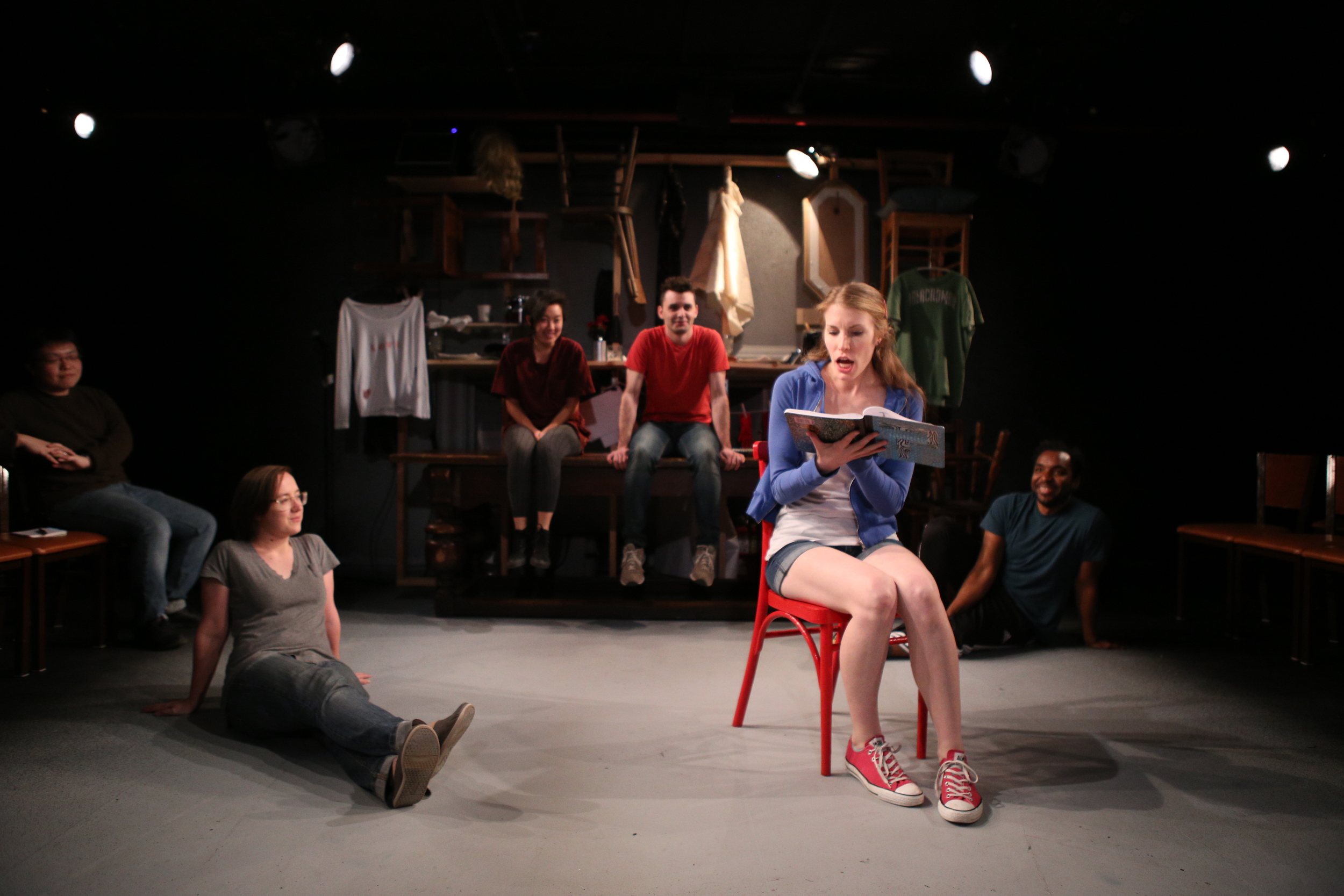
The story starts, with all cast members taking round-robin turns in the hot seat to read from the text, with the rom-com possibilities of girlhood and “the boyfriend code,” and quickly shifts from doubts about the “too good to be true” boyfriend to the travails of what is real and what isn’t. Crammed with a host of horrific possibilities, the show becomes a dizzying dash through the psyche of a girl on the edge. Her only constant companion in all this is her smartphone, which seems to never let her down. Justin, the first boyfriend, who almost loses her through his dim sense of how to carry on a text conversation, becomes her stalwart support as well, though he has to be one of the most amorphous characters ever.
The play’s goal seems to be to keep the audience as “confizzled” as its lithe protagonist, Lola (Ashton Heyl), running madly from romantic scene to sinister scene and back again. Along the way are less than comforting run-ins with her mother (Jaksch), her waffle-chomping brother (Ashley Chang), and zips up and down the elevator (she’s staying in a hotel California on a trip, in more ways than one, from Oregon) in search of the elusive thirteenth floor. Oh, and did I mention the sound effects are also performed onstage and seem to act almost as commentary. The “pings” of text messages are particularly effective.
As Lola, Heyl is breathless, wide-eyed, and probably any young girl’s dream of what she’ll look like one day. She keeps the play in focus, for all its leaps, by never losing her Nancy Drewish, this will all make sense in the end gumption. The able support comes from cast members willing to become whatever is necessary. Who can play a romantic interest that becomes a bestie (BFF) that begins to transform, through make-up, dress, and wig, into a best girlfriend (BGF)? Dustin Wills, that’s who, while also setting the record for the number of times one can run upstairs, through the studio and down the backstairs to simulate someone running from Oregon to California. And as “the Mystery Boy” himself, Phillip Howze is hilarious as possible ghost, possible killer, possible threatening romantic attachment, and all CA slacker no matter what.
There are squirt guns, ray guns, the incredible shifting table that does everything but levitate, and any number of laughs, references, and hair-breadth escapes that will likely have you—or the young-at-heart amongst us at least—ROFLMAO. A word on the dialogue: it’s rife with the text-message terms and phrases that are sometimes interpreted and sometimes not, adding a note of authenticity to the entire odyssey because, y’know, if someone texts it, it must be true. If you like B movies and the flutter of first romance, this show’s for you.
And what happens next? Maybe Lola should go online so we can follow her future adventures on Twitter. #girluninterrupted
The Mystery Boy Conceived by Chris Bannow Directed by Chris Bannow and Helen Jaksch
Ensemble: Chris Bannow, Ashley Chang, Ashton Heyl, Phillip Howze, Helen Jaksch, Dustin Wills; Set: Alexander Woodward; Lights: Joey Moro; Sound: Kate Marvin; Costumes: Sophie von Haselberg; Technical Director: Scott Keith; Stage Managers: Ryan M. Davis, Taylor Barfield; Producer: Kee-Yoon Nahm
Yale Cabaret April 3-5, 2014






